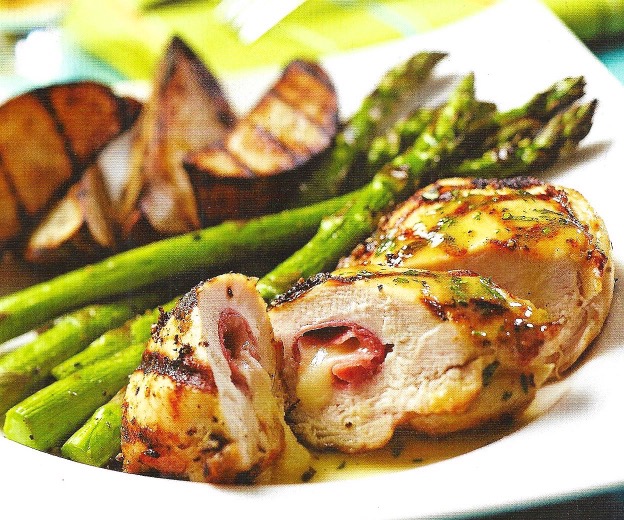How to Create a Pocket in a Chicken Breast
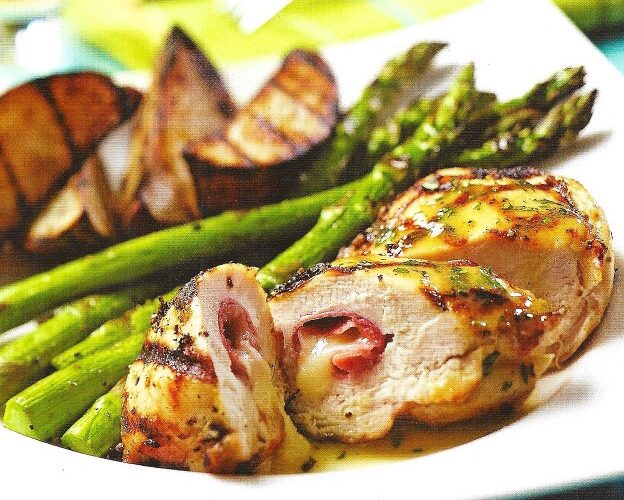
As much as I think I made it sound easy to stuff a chicken breast like in my family’s favorite Chicken Cordon Bleu recipe, it’s a bit challenging if you have never done it before. The original Good Housekeeping recipe actually calls for you to place the ham and cheese on the flattened chicken breast, fold it in half and secure it with toothpicks. For years, I did make it this way and always found it irritating that all the cheese just ended up as gushy bits in the sauce. I always found it difficult to cook the chicken and know when it was actually cooked. I have accidentally served undercooked chicken and had a freak-out. There always seemed to be one person who found the forgotten toothpick that I missed pulling out.
It wasn’t until several years later that I saw a BBQ recipe for stuffed chicken. Since the chicken is being BBQ’d, the recipe developer needed a way to keep the stuffing inside the chicken. That’s where they described making a “pocket”. I knew instantly that this was the solution to my Chicken Cordon Bleu messy cheese and toothpick problem.
Step 1 – Make the Incision
You are going to need a knife that very much resembles the knife in the picture above. I like to go with a knife that is about 1″ or 2.5 cm wide and it should not be any longer than the length of the chicken breast.
Insert your knife into the breast starting with the thickest part of the breast. Slide the knife back and forth to enlarge the incision, not too much. BE CAREFUL not to cut through the chicken and make a hole. It really needs to be a pocket and wide enough to fit your stuffing comfortably.
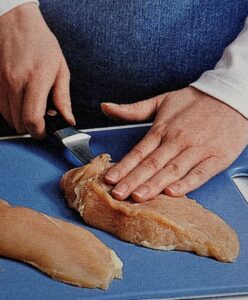
Step 2 – Prepare Stuffing
Stuffing can come in many different forms:
 Cheese, sliced or shredded
Cheese, sliced or shredded
 Chopped vegetables like spinach or fruit (I’ve seen apple in a pork chop)
Chopped vegetables like spinach or fruit (I’ve seen apple in a pork chop)
 Chopped or minced meat like sausage (without its casings)
Chopped or minced meat like sausage (without its casings)
 Fresh chopped or minced herbs
Fresh chopped or minced herbs
Any combination of these!
The stuffing needs to fit into the incision so make sure it is soft enough or can be rolled so that when you go to insert it, you do not tear the chicken pocket. If you are dealing with ham and cheese, like the Chicken Cordon Bleu recipe, cut your cheese to be about 3″- 7.5 cm long and no more than an inch – 2.5 cm wide. I would even overlay the knife used to make the incision over my stuffing to judge if my stuffing will fit. You may need to slide the knife back in and make the pocket a little wider.
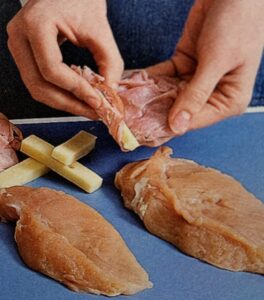
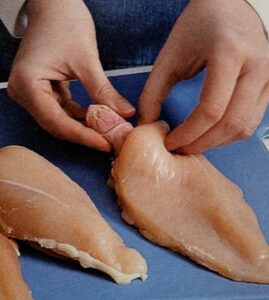
Cooking a Stuffed Chicken Breast
Just by looking at your stuffed chicken breast, you can clearly see it has grown in thickness. It also means it’s not going to cook in the same way that a non-stuffed chicken breast would cook. If your recipe is for stuffed chicken breast, then obviously follow the cooking instructions. If you are getting creative in the kitchen and being a rebel, just remember to make sure to use an Instant Read Thermometer. It can be very deceiving when the chicken is truly cooked and the type of stuffing can also have an impact. That is why I don’t mess about and always “Trust the Thermometer”.
The safe temperature is 165 F degrees. Make sure you have inserted your thermometer into the very center of the chicken breast.
You don’t really want to have to cut into a stuffed chicken breast to check if it’s cooked. You will ruin your WOW moment when your crowd starts eating the meal. It’s one of those simple skills, now that you have seen how to do it, that really make a dish look professional. Look at this beautiful Grilled version of Chicken Cordon Bleu!
